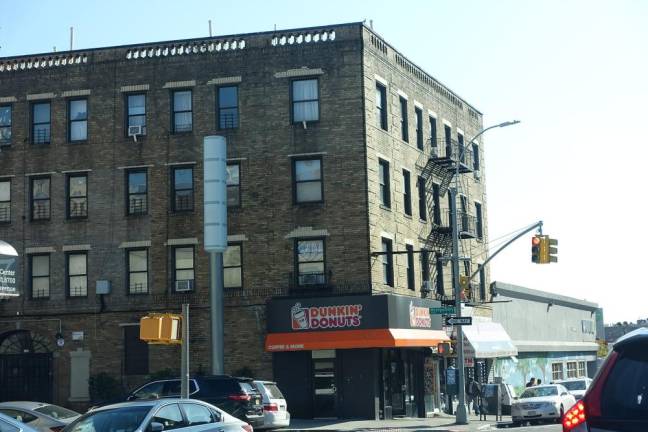Link5G Redesign a Possibility, Says Chief Technology Officer
The city’s technology office is “looking at other design options’’ for the program, said Chief Technology Officer Matthew Fraser, as the original 32-foot tall Link5G towers encounter fierce community backlash and repeatedly undergo federal historic preservation review.

LinkNYC’s metallic, 32-foot-tall 5G towers have faced no shortage of backlash since they were first announced in 2022—especially from the historic districts of Manhattan, whose residents have criticized them as out of scale and incompatible with their neighborhoods’ character. Officials appear to be listening, and changes to the design may be afoot.
In a development first reported by Crain‘s, Chief Technology Officer Matthew Fraser said that his agency is “currently reassessing design elements” for the Link5G program during a New York City Council technology committee meeting earlier this month.
“Some of the things we’ve heard ... over the last year or so is that many people aren’t fans of the look and the aesthetics of the tower,” said Fraser. “So we’re looking at other design options and elements from other cities that [have] done it to see how we can make it different.” He mentioned the possibility of a public design competition and said that a new design, if selected, would be reviewed by community boards and the Public Design Commission before being implemented. He added that the current Link5G design underwent the same process.
District 3 Councilmember Erik Bottcher, who signed a joint letter to the mayor echoing calls for a Link5G rollout moratorium last year, said that Fraser’s announcement was “great news.” He likened the current design to a “32-foot tall mushroom missile.” “I have to believe that there’s better designs out there for it,” he went on to say.
Alternative designs have been floated before—in a report released by Manhattan Assemblymember Alex Bores last October, for instance. It recommended design alternatives that are less obtrusive than the current tall towers and presented examples implemented in cities like Phoenix and Boston: 5G cells that can be attached to existing lampposts and sign posts, or hidden in local landmarks like a fake cactus or church spire. Comptek Technologies, which designs and manufactures the current Link5G towers, has also presented lower profile options, according to a New York Post report.
Andrew Berman, executive director of the Greenwich Village Society for Historic Preservation, has been vocal in his opposition to the Link5G towers, and especially to their installation in historic districts and near local landmarks. His group was “heartened to hear Mr. Fraser say the city was considering alternatives,” he said in an email to Straus News. They want the city to first consider attaching the 5G cells to existing street furniture, and if “freestanding structures are needed,” to “consider designs that are shorter, smaller, less intrusive looking, and eschew the large video screens in residential neighborhoods.”
But Berman still questioned the usefulness of the towers. Village Preservation, he said, wants to see the city “explain why these structures are necessary at all in the many locations in which they are proposed, often closely concentrated in batches of multiple towers within small areas.”
Link5G’s critics have repeatedly called the program’s siting process opaque. But proponents of the program have argued that installing 5G infrastructure throughout the five boroughs is necessary for the network’s functioning, and for achieving the goal of increasing connectivity for all New Yorkers.
Though there may be plans for a redesign on the horizon, a spokesperson for the city’s Office of Technology and Innovation told Crain’s that there are no concrete plans so far. “CTO Fraser is interested in looking at every option for enabling existing street furniture to support Wi-Fi and other services, similar to the Link5G program,” he said.